- Home
- Graham Hancock
The Master Game Page 16
The Master Game Read online
Page 16
The Gnostic texts continue with their version of the book of Genesis telling the story of human history on earth after the ‘Fall’. Time passes and we read how the descendants of Adam and Eve achieved a high state of development, manipulating the physical world with clever machines and devices and beginning to engage in profound spiritual inquiries. Out of jealousy the demiurge intervenes again to diminish human potential, calling out to his demonic powers: ‘Come, let us cause a deluge with our hands and obliterate all flesh, from man to beast.’23
According to the Gnostics, the Flood was not inflicted to punish evil – as the Old Testament falsely informs us – but to punish humanity for having risen so high and ‘to take the light’ that was growing amongst men. 24 The devastation of the Flood all but achieved this objective. Although there were survivors, they were thrown: … into great distraction and into a life of toil, so that mankind might be occupied by worldly affairs, and might not have the opportunity of being devoted to the holy spirit .25
But fortunately there were a few amongst our ancestors who still possessed the old knowledge, and who were determined to pass it down for the benefit of future generations, for as long as necessary, wherever possible, until such a time as a general awakening might occur again .26
The ‘Organisation’ (2): A reawakening in the 10th century?
We could not help wondering how the mysterious ‘Organisation’ spoken of in the Nag Hammadi texts would have reacted to the persecutions being unleashed on Gnosticism when the texts were sealed away near the end of the fourth century AD. Might its members not have been inclined to see themselves in the same mythical framework as the Flood survivors of the Gnostic creation legends? Of course they were not dealing this time with a literal ‘flood’ sent by the diabolical God of the Old Testament to steal the light of mankind. But from the Gnostic point of view what they confronted was at least equally dangerous – the investigations of the heresy hunters, the random violence of Christian mobs, the burnings of books and people.
The Nag Hammadi texts invite us to consider the possibility that a secret society, purposefully set up to secure and preserve Gnostic teachings through periods of difficulty, had been in existence at least between the first and third centuries AD (when the texts were composed). If such an ‘Organisation’ still remained active until the time when the texts were buried then there is every possibility that it could have survived the holocausts of the fourth to the sixth centuries. Even without such obvious shelters and vectors as the Messalians and the Manicheans, it would not have been too difficult for a small and dedicated sect of heretics to have maintained a clandestine existence and to have continued to recruit new members through the Dark Ages between the sixth and the tenth centuries. There is no particular reason, if it was discrete, why it should have attracted much attention or ever been recognised for what it was. There were many remote religious communities of hermits or monks that could have provided it with suitable camouflage until such a time as it chose to step out of the shadows again.
And what better or more auspicious time for Gnosticism to step out of the shadows and make another bid to establish a world religion than the final century of the first millennium? This was precisely the moment – somewhere between AD 920 – 970 as we saw in Chapter Three – that the heresiarch who called himself Bogomil, ‘Beloved of God’, began to preach so persuasively in Bulgaria. We know already that the Church he founded had ambitions to achieve a general awakening. We've seen how its influence spread with great rapidity and success, first in territories under the spiritual hegemony of the Eastern Orthodox Church, and later in areas such as northern Italy and Occitania that were under the control of the Roman Catholic Church.
On both fronts the absolute dominance of what was by then thought to be established Christianity was challenged with a doctrine in many respects identical to that of the early Christian Gnostics.
And on both fronts the challenger claimed to be the original church of Christ whose rightful place had been usurped by the incumbent.
Gnostics, Bogomils and Cathars: much in common (1)
Gnosticism is thought by many scholars to have been a late pre-Christian philosophical religion that insinuated itself like a virus into early Christianity and attempted to transform it into a vehicle for propagating its own ideas – hence ‘Christian Gnosticism’. On the same evidence that they offer, however, it is equally possible to argue that the Christian cult was Gnostic in origin but was later hijacked by a group of hard-headed scriptural literalists who turned it to their own ends. Either way most authorities point to Palestine in the first century BC as the birthplace of Gnosticism; from there, they say, it spread rapidly to Alexandria which was to become the main centre for its subsequent expansion .27
During that epoch, though they had very different backgrounds, Palestine and Alexandria shared the common Hellenistic culture that had prevailed throughout the Mediterranean, Mesopotamia and Iran since the conquests of Alexander the Great in the fourth century BC. This had been – and indeed continued for some time to be – a period of extraordinary vivacity, intellectual endeavour, creativity, rationality and intense spirituality. It brought together in one gigantic Hellenistic melting pot the priests of ancient Egypt, the dualist Magi of Iran, initiates of the mysteries of Mithras, Platonic philosophers from Greece, Jewish mystics, Buddhist missionaries and a host of other influences from near and far. It was somewhere in that ‘confused but thrilling encounter,’ suggests historian Joscelyn Godwin, that ‘Gnosticism was born, the religion of Gnosis – knowledge of the true nature of things.’28
There are certain fundamental elements of Gnosticism. Of these the most important is the notion that there exists an entirely spiritual, light-filled realm that is ruled by a benevolent and loving ‘Good God’, but that the material realm in which we live is the creation of an ‘Evil God’. As we've seen, the exploits of Jehovah in the Old Testament served the Gnostics very well as illustrations of this idea during the first and second centuries AD. He had created the world, the Bible said, and his actions were also almost invariably wicked, mean-spirited, jealous, violent and cruel – exactly what one would expect of an Evil God. It cannot be an accident that we find the identical usage of Jehovah in identical contexts for identical purposes by the Cathars and Bogomils between the 10th and 14th centuries.
Another hint that these groups at opposite ends of the first millennium must have been closely linked comes when we remember that all of them believed our souls to have been created by the Good God and to belong in the good realm while our bodies were part of the evil material creation. Gnostics, Cathars and Bogomils all likewise regarded the soul as a prisoner in the demonic material world where it was in constant danger of being dragged ever deeper and trapped ever more firmly. All three of them offered it a way of escape (from what would otherwise be eternal confinement) by means of initiation into their system and acquisition of the gnosis that they had to teach.
In all three cases this gnosis appears to have involved an absolutely convincing and probably instantaneous insight into the miserable situation of the soul, the true nature of matter, and the escape route that Gnosticism offered. In all three cases Christ was seen not as a redeemer (who died to expiate our sins) but as an emanation of the divine who had descended to open men's eyes to their true predicament. Last but not least, although all three groups treated the advent of Christ as a cosmic event of enormous importance, all three also believed that he had never incarnated in the flesh, that his body was an apparition, and that his Crucifixion was therefore an illusion.
Gnostics, Bogomils and Cathars: much in common (2)
The Gnostic religion of the first four centuries of the first millennium, and the Bogomil and Cathar religions of the first four centuries of the second millennium, shared many other intimate details. We've already seen in Chapter Three how the consolamentum ritual of the latter, which raised the candidate from the status of credente to the status of perfectus, was essentially iden
tical to the ritual of adult baptism in the early church which raised the candidate to the status of a fully initiated Christian. The irony, as Steven Runciman points out, is that: While polemical churchmen in the Middle Ages denounced the heretics for maintaining a class of the Elect or Perfect they were denouncing an Early Christian practice, and the heretic initiation ceremony [the consolamentum] that they viewed with so much horror was almost word for word the ceremony with which Early Christians were admitted to the Church … 29 Such similarity cannot be fortuitous. Obviously the Cathar Church had preserved, only slightly amended to suit its doctrines of the time, the services extant in the Christian Church during the first four centuries of its life.30
What is now clear is that the services used by the early church were, in origin, almost exclusively the services of early Christian Gnosticism.31 They were deleted and replaced as the literalist Christian faction in Rome consolidated its power during the forth and fifth centuries. But it was natural that the banned rituals would continue to be practiced and preserved by surviving Gnostic sects. Some of these have been named in the provisional chain of transmission we sketched out in Chapter Four. But it's likely that many more lived on in secret either in remote communities or by ‘veiling’ themselves inside the organisations of their religious competitors.
Although all this sounds very cloak-and-dagger it is accepted by historians that many Gnostic and dualist sects were extremely secretive in their behaviour. Understandably, they became adept at concealing themselves from authorities who would burn them. We have cited examples in previous chapters of ‘nests of heretics’ – Bogomils and Cathars – being exposed within both Eastern Orthodox and Roman Catholic monasteries during the 10th to 14th centuries. It is significant, and even suggestive of a ‘standard operating procedure’, that veiling of exactly the same sort was also used by the heretics of the fourth and fifth centuries when Gnosticism was being persecuted. Indeed it is most likely that the unknown group of Gnostics who concealed the Nag Hammadi library were themselves Christian monks. At that time two monasteries of the supposedly Orthodox Pachomian order stood within six miles of the spot where the codices were buried.32
The initiation ritual of the consolamentum served at least two major functions in the religion of the Cathars and Bogomils.
First, through a chain of direct contact, which they claimed stretched unbroken all the way back to the apostles, the laying on of hands transferred the power of the Holy Spirit. As the jolt of sacred energy washed over him, they believed that the candidate's eyes were opened – in an instant – to the full predicament of his soul, separated from its true heavenly home, imprisoned in the realm of an Evil God. What that flash of enlightenment really gave him, in his belief, was the complete knowledge and spiritual power needed to break the bonds of matter and return his soul to heaven.
Professor Roelof van den Broek of Utrecht University has made an argument that the consolamentum was not a truly ‘Gnostic’ initiation because no ‘special kind of Gnosis’ was transferred by the ritual.33 The professor is an authority in his field, whose work we highly respect. But this statement requires an overly-restrictive definition of the kind of ‘knowledge’ that gnosis was, and gives no thought as to how it was supposedly acquired. As we've already noted, the Gnostic initiation rituals of the first to the fourth centuries AD, just like the initiations of the Bogomils and Cathars a thousand years later, were simple ceremonies involving the laying on of hands. It is absolutely obvious that what descended on the candidate in all three cases was not a specific body of learning to be mastered intellectually either through an oral tradition or from books. It was, instead, revealed knowledge, inspired knowledge, which passed in an instant like a charge of electricity and which he or she had to experience directly and personally. In essence it was not even complicated or difficult knowledge. As Bernard Hamilton maintains, the early Christian Gnostics saw it simply as ‘knowledge of the truth about the human condition.’34 As such you either got it, or you didn't.
Besides, despite his reservations about full Gnostic status for the consolamentum, van den Broek himself goes on to affirm: Because of their dualism, be it moderate or absolute, the Cathars can be called Gnostics. If the idea that the material world is made by an evil creator and that the soul is locked up in the prison of the body cannot be called Gnostic, then there are no Gnostic ideas at all. In this sense Catharism is a medieval form of Gnosticism.35
The second function of the consolamentum for the Cathars and the Bogomils was to elevate the candidate from the rank of credente to the rank of perfectus. In this too they were following a pattern that had been set down by Christian Gnostics in the first four centuries AD. We've already seen that the Manicheans, in exactly the same way as the Cathars and Bogomils, divided themselves into two great classes of elect and hearers. So too did an earlier Gnostic Church established by Valentinus in the second century AD. He divided his ‘good Christians’ into two classes – the pneumatics (‘spirituals’, ‘full of divinity’36) and the psychics (those with the potential, through effort, to become spirituals).37 Marcion, another charismatic heretic of the second century AD, used the same system in the influential and successful Gnostic Church established in his name.38 As was the case with the Cathar and Bogomil perfecti, severe austerities, fasts, vegetarianism and chastity were the domain of the pneumatics only. As was the case with the Cathar and Bogomil credentes, the psychics were free of such obligations but had a duty to care for, worship and protect the pneumatics.39
Gnostics, Bogomils and Cathars: much in common (3)
Another matter which changed not at all between the 4th century and the 13th century was the peculiarly consistent and cruel manner in which people who held to the Gnostic and dualist perspective were punished by the Church. When you consider what is involved for the victim of a burning at the stake it is obvious that no rational person would choose such a death lightly. So the very fact that so many initiated Gnostics actually chose to die in this awful manner – rather than abjure their beliefs – and that so many Cathar perfecti did the same a millennium later, tells us, at the very least, how deeply all these men and women must have been convinced that they were right. Whether they were deluding themselves or not is another matter – and one that is impossible to settle with certainty in this life. But we cannot doubt that they were absolutely certain about what would happen to their souls after they had passed through the ordeal of the flames.
As well as having much in common with each other, Gnosticism and the later religion of the Bogomils and Cathars also share one striking characteristic with established Christianity. They are all ‘Salvationist’ faiths – i.e. they all provide a system, and they promise that if it is followed it will ‘save’ the souls of its adherents. Yet even here, when we look closer, we discover that the Cathars, Bogomils and Gnostics stand together on one side of a line while the guardians of established Christianity stand on the other. This is because the doctrine of Catholicism and of the Eastern Orthodox Church might best be summed up as ‘salvation through faith alone’ – blind faith being all that is required. Whereas what the heretics were all offering was salvation through knowledge – revealed knowledge, inspired knowledge, saving knowledge – that was experienced directly by the initiate.
Whether a delusion or not, it was on account of this personal knowledge of what awaited them after death – and nothing else – that the Gnostic and Cathar heretics endured the flames with such calm certainty.
Pontifex Maximus
The Roman Catholic Church did not invent burning at the stake as a punishment for heresy but took over the idea intact from long centuries of Roman tradition. Since the reign of Augustus Caesar (27 BC – AD 14) all the emperors, in addition to their other responsibilities, had held the office of Pontifex Maximus – the title of the ancient high-priest of the state religion of Rome .40 The religion could (and did) change from emperor to emperor, but the emperor of the day always remained its Pontifex Maximus. In order to maintai
n the mandate of heaven he was required to protect the state religion and punish any attempts to undermine it. This did not concern most creeds, which went about their business peacefully and were tolerated. But it did affect militant evangelistic religious movements like the Christians and the Manicheans which offered a perceptible threat to the dominance of the state cult, and thus to the state itself. Very frequently the offenders were charged with heresy and burnt at the stake.
In 186 BC a mystery cult dedicated to the god Dionysos was banned in Rome and thousands of its initiates executed.41 On another occasion ‘philosophers’ were burnt for threatening the proper conduct of religion. Witnesses said they went to the stake ‘laughing at the sudden collapse of human destinies’ and died ‘unmoving in the flames’.42 A thousand years later when the persecutions began in the Languedoc, Cathar perfecti were repeatedly seen to do the same.
The Roman historian Tacitus records a terrible massacre of Christians during the reign of Emperor Nero (AD 54 – 68). However, this seems to have had less to do with protecting the state cult than with popular hatred of the Christians at that time. Already despised for ‘their abominations’ they were wrongly blamed for starting the great fire that devastated Rome in AD 64: An arrest was first made of all who confessed; then, upon hearing their confessions, an immense multitude was convicted, not so much of arson but of hatred of the human race. Mockery of every sort was added to their deaths. Covered with the skins of beasts they were torn apart by dogs, nailed to crosses, or doomed to the flames. Those who were burned were used to illumine the night-time skies when daylight ended.43

 Underworld: The Mysterious Origins of Civilization
Underworld: The Mysterious Origins of Civilization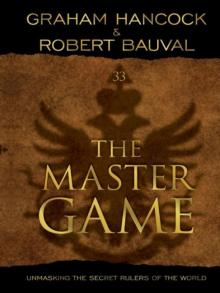 The Master Game: Unmasking the Secret Rulers of the World
The Master Game: Unmasking the Secret Rulers of the World America Before
America Before Entangled
Entangled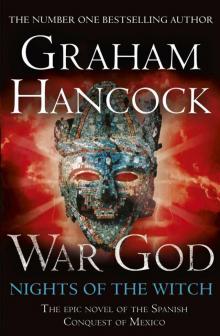 War God: Nights of the Witch
War God: Nights of the Witch War God: Return of the Plumed Serpent
War God: Return of the Plumed Serpent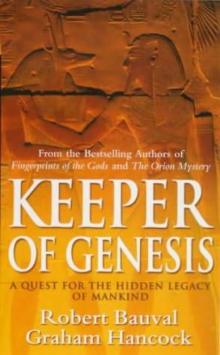 The Message of the Sphinx AKA Keeper of Genesis
The Message of the Sphinx AKA Keeper of Genesis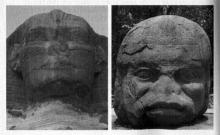 Fingerprints of the Gods
Fingerprints of the Gods The Sign and the Seal
The Sign and the Seal The Mars Mystery: The Secret Connection Between Earth and the Red Planet
The Mars Mystery: The Secret Connection Between Earth and the Red Planet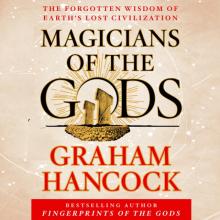 Magicians of the Gods: The Forgotten Wisdom of Earth's Lost Civilization
Magicians of the Gods: The Forgotten Wisdom of Earth's Lost Civilization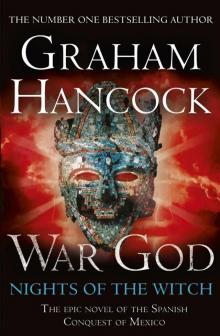 War God
War God Underworld
Underworld The Mars Mystery
The Mars Mystery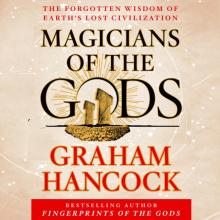 Magicians of the Gods
Magicians of the Gods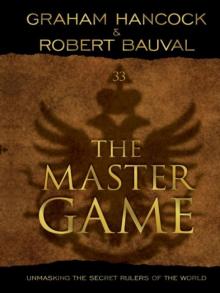 The Master Game
The Master Game